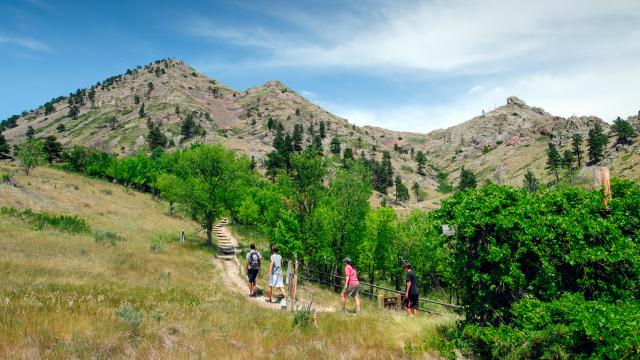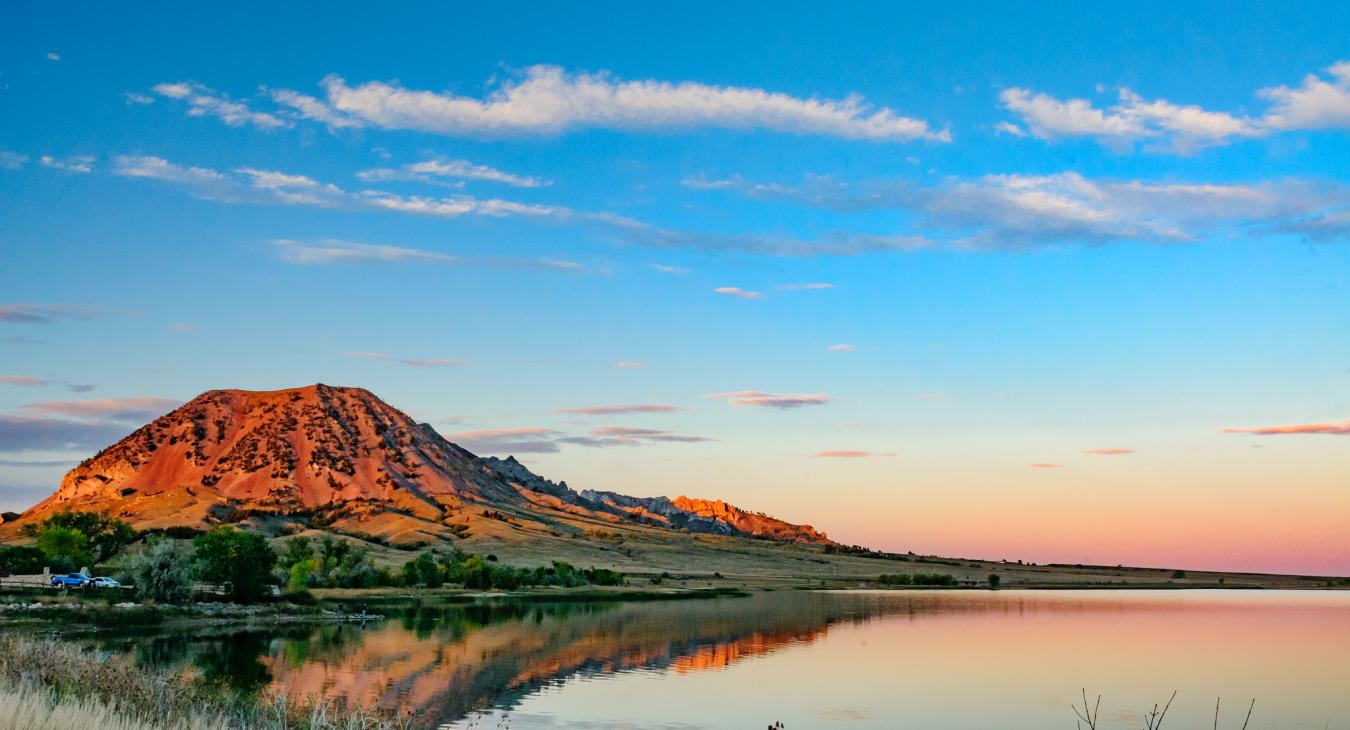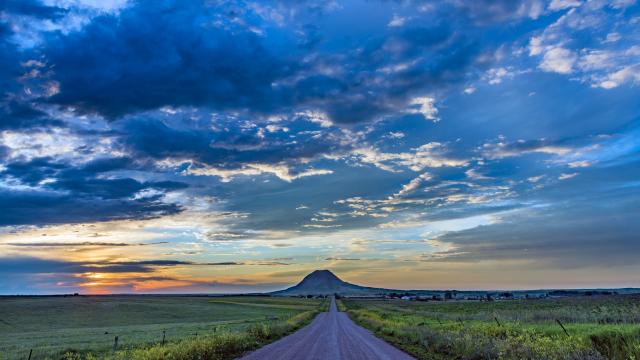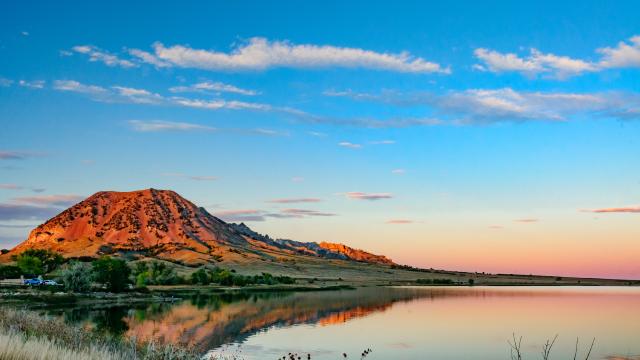This geological formation is one of several intrusions of igneous rock in the Black Hills that formed millions of years ago. From the 4,426 foot summit, you can view four states. Bear Butte State Park is considered a sacred site to the Lakota and a unique natural landmark in the Black Hills.
The park's namesake, Mato Paha or “Bear Mountain” is the Lakota name given to Bear Butte State Park. The mountain a towering formation that rises 1,200 feet above the surrounding prairie and offers breathtaking views of the region.

Hiking Trails
Explore the park's natural beauty on its 9 miles of hiking trails. From easy walks to challenging hikes, the trails offer something for everyone. Enjoy stunning views of Bear Butte, the Black Hills, and the surrounding prairies.
Please note that dogs or horseback riding is not allowed on Bear Butte.

Scenic Views
Take in the panoramic views of Bear Butte and the surrounding landscapes from different viewpoints. With its unique geology and location, visitors can enjoy stunning views of the Black Hills and the surrounding plains that stretch for miles.

Camping & Picnicking
Bear Butte State Park offers several picnic areas, including the North and South Pavilions, which provide stunning views of Bear Butte and the surrounding area.
There are also 2 campgrounds at nearby Bear Butte Lake, 1 that welcomes horses - although horseback riding is not allowed on Bear Butte, you can ride for miles around the lake.
Reservations for either campground can only be made by calling the Bear Butte State Park Visitor Center:
605-347-5240

Spiritual and Cultural Significance
Stop at the Visitor Center to learn about the cultural and spiritual significance of Bear Butte to Native American tribes. You may see prayer bundles along the trail - please do not disturb them. Several indigenous tribes consider Bear Butte to be a sacred site.
Embrace the tranquility - Take only photos, leave only footprints.








